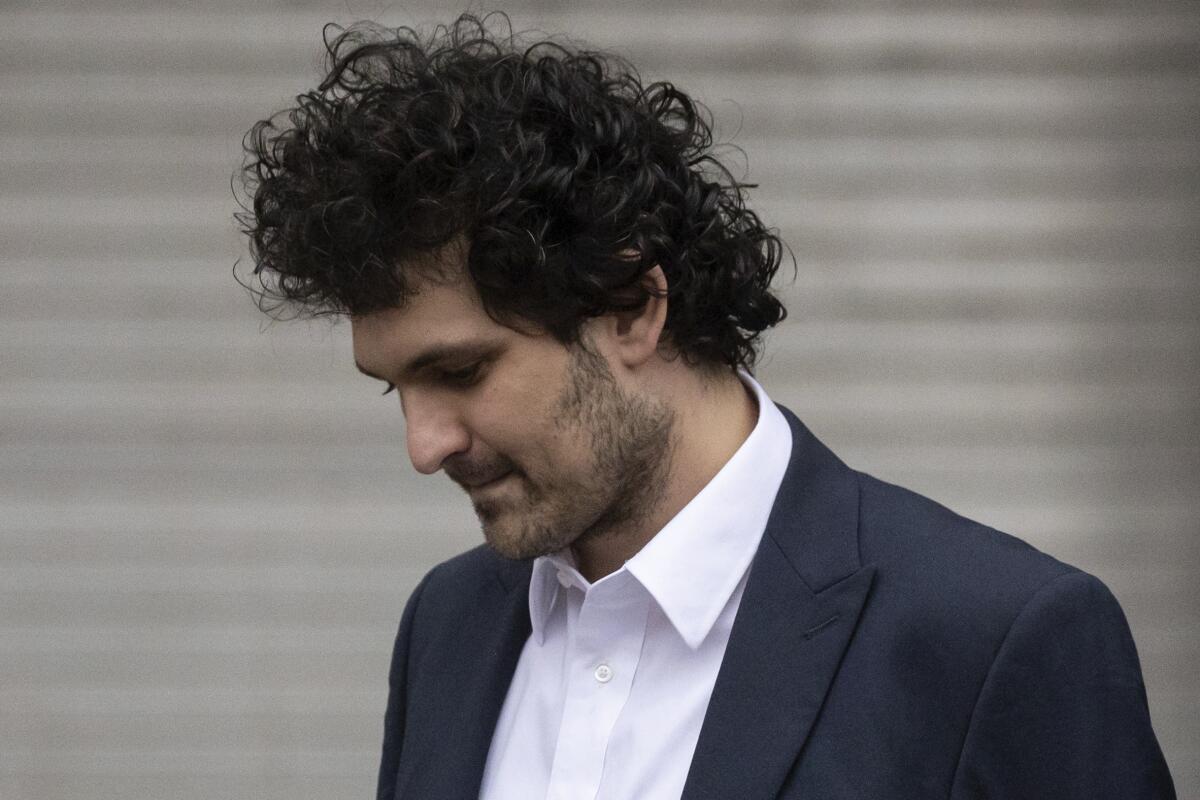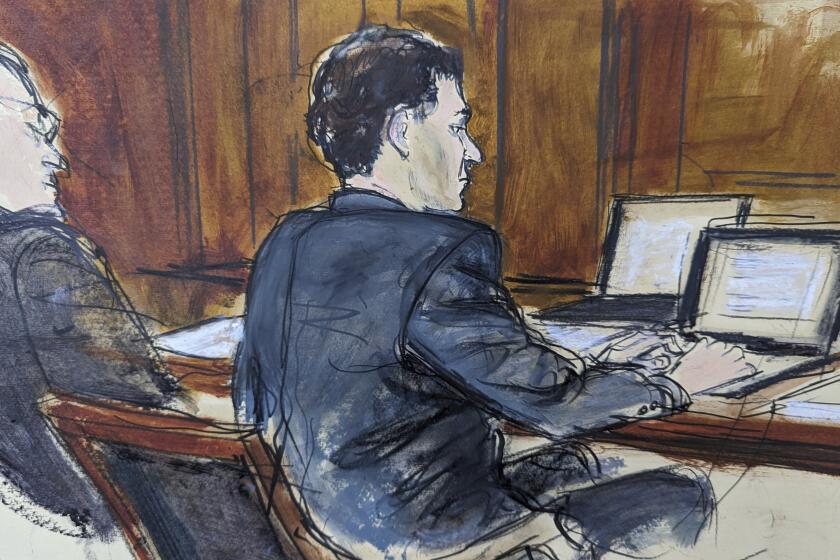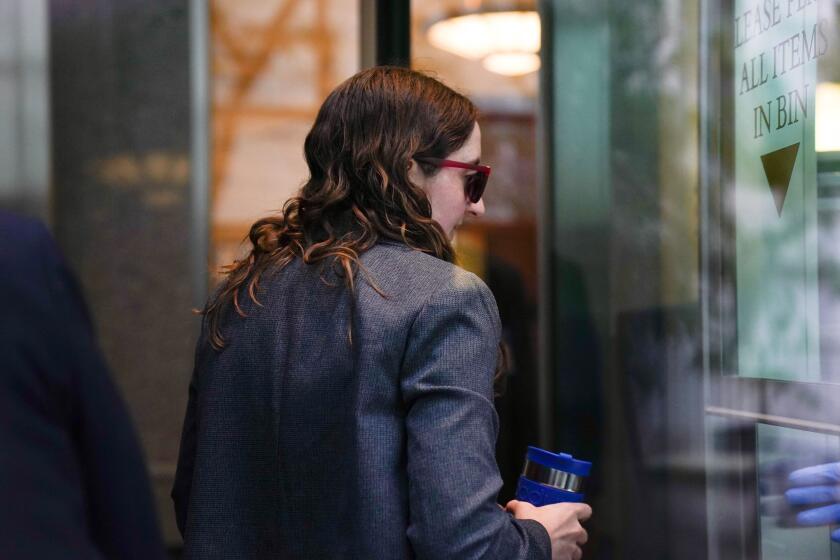After ex-girlfriend’s testimony, crypto takes center stage at Bankman-Fried trial

- Share via
After three days of riveting testimony in the case against FTX co-founder Sam Bankman-Fried, a Manhattan federal courtroom got pulled into the inner workings of the business that drives the market at the heart of the trial — crypto.
Zac Prince, chief executive of defunct crypto lender BlockFi, took the stand Friday to discuss his firm’s business relationship with the digital-asset exchange and its sister trading fund, Alameda Research. BlockFi, which was a lender to Alameda and client of FTX, had some $1 billion in total exposure to the two companies at the point of its own failure in November 2022, Prince estimated.
“I don’t think BlockFi would’ve filed for bankruptcy in November 2022 if the Alameda loans were still in good standing” and the funds on FTX were there, Prince said.
Bankman-Fried is accused of orchestrating a multibillion-dollar, years-long fraud at FTX and Alameda, both of which also collapsed in November. Prince’s testimony was in stark contrast to that of Caroline Ellison, the government’s star witness, who was on the stand for three days portraying Bankman-Fried, her boss and former boyfriend, as the mastermind behind a scheme to use FTX customer funds for speculative, illiquid trading at Alameda.
Prosecutors sought to show Prince and his company, BlockFi, were victims of Bankman-Fried’s alleged schemes, making loans to Alameda based on misleading balance sheets. Defense lawyers, however, sought to demonstrate that BlockFi provided the loans to Alameda willingly, with knowledge of the risks, and it’s industry norm for borrowers to provide “unaudited balance sheets” to lenders.
Prosecutors depict Sam Bankman-Fried as a calculated criminal who used investor deposits at crypto giant FTX as a personal bank account.
BlockFi was among several companies that struggled under a rush of withdrawal requests and soured asset prices last summer, a situation that also affected Alameda. In May 2022, BlockFi had $1.1 billion in loans outstanding to Alameda, Prince said, which it repaid in full.
After BlockFi received a rescue package from FTX US over the summer, it continued to lend to Alameda, providing around $850 million in net new financing up until the fund collapsed in early November.
An explanation from Prince about how BlockFi conducted stress-testing on Alameda’s proffered collateral — a mix of tokens affiliated with FTX — prompted the judge to request he use plainer terms, such as an analogy about car loans.
Since filing for bankruptcy, BlockFi was challenged by its own creditors for failing to spot warning signs when offering substantial loans to Alameda. Much of Prince’s testimony focused on how much due diligence it conducted on Alameda, citing a balance sheet from the second quarter of 2022 that appeared to show Alameda with billions of dollars in assets greater than its liabilities.
The prosecution started Prince’s questioning at the end of Thursday’s session. His entrance into the courtroom that day prompted a rare glance upward from Bankman-Fried, who has mostly been glued to his laptop throughout the trial.
Caroline Ellison, the former chief executive of Alameda Research, told an N.Y. court that Sam Bankman-Fried directed her to commit crimes that led up to the collapse of FTX.
More to Read
Inside the business of entertainment
The Wide Shot brings you news, analysis and insights on everything from streaming wars to production — and what it all means for the future.
You may occasionally receive promotional content from the Los Angeles Times.












